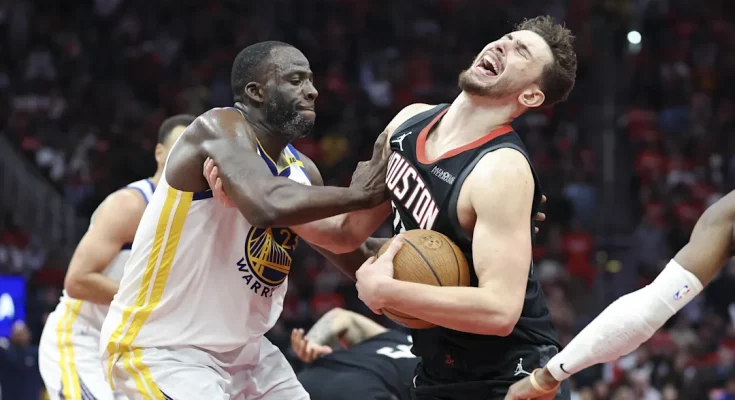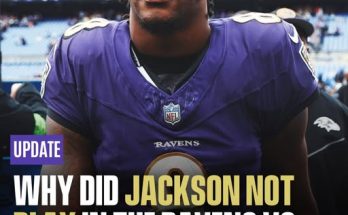Draymond Green’s recent clapback at Houston Rockets’ rising star Alperen Sengun has certainly sparked plenty of buzz and debate across the NBA community. The fiery exchange between the two players offers a fascinating glimpse into the intensity of competition, the intricacies of player rivalries, and the fine line between confidence and miscalculation. However, despite Draymond’s sharp response that drew widespread attention, there’s one major problem with his clapback — and it lies at the heart of the ongoing dynamics between veteran leadership and youthful promise in the league.
To understand why Draymond Green’s reaction has stirred so much conversation, we first need to rewind to the context that set the stage for this verbal duel. Alperen Sengun, the 21-year-old Turkish center and one of the NBA’s most intriguing young talents, has been steadily making a name for himself with the Houston Rockets. Known for his impressive footwork, versatile skill set, and fearless approach in the paint, Sengun has emerged as a cornerstone for the Rockets’ rebuilding efforts. His poise on both ends of the floor belies his youth, and he has drawn admiration from fans and analysts alike for his rapid development.
In a recent game between the Warriors and the Rockets — a matchup that inevitably pits experience against youth, playoff pedigree against a team hungry to prove itself — Sengun caught the attention of Draymond Green. Green, a seasoned veteran and three-time NBA champion known as much for his fiery leadership as his defensive prowess, is no stranger to mixing it up with opponents. After some back-and-forth during the game, Sengun appeared to take a swipe at Draymond, which set off a series of heated exchanges that extended beyond the court.
Green, never one to back down, delivered a sharp clapback, responding with a mix of sarcasm, confidence, and his trademark intensity. His retort quickly went viral, amplifying the spotlight on the Sengun-Green rivalry and fueling discussions about leadership, respect, and the evolving culture of the NBA.
At first glance, Draymond’s response seemed classic Green — bold, unapologetic, and designed to rattle his opponent. It was the kind of verbal firepower that has defined his career, a way to assert dominance not just physically but psychologically. But here’s where the problem lies: while his clapback was entertaining and emblematic of his competitive nature, it missed the mark when it came to understanding the broader narrative and subtle shifts within the league.
To put it bluntly, Draymond Green’s response underestimated Alperen Sengun’s rise and the changing guard of the NBA. The league is currently experiencing a generational shift — veteran stars like Green are gradually giving way to young, versatile talents who bring fresh energy and new styles of play. Sengun is one of those players, representing not only a different era of basketball but also a new kind of player archetype. His skill set blends traditional big-man fundamentals with a modern approach that values mobility, shooting, and basketball IQ.
Green’s clapback, rooted in an era where grit and toughness dominated, somewhat failed to acknowledge that this new wave of players demands a different kind of respect. By dismissing Sengun’s impact or downplaying his potential through a pointed jab, Green risked appearing out of touch with the evolving NBA landscape. It’s less about who “wins” the verbal exchange and more about recognizing that the game — and the players who excel in it — are changing.
Furthermore, Draymond’s aggressive style, both on and off the court, has always been a double-edged sword. His fiery persona energizes teammates and intimidates opponents, but it also sometimes leads to controversy and alienation. In this particular instance, his clapback might have reinforced negative stereotypes that veteran players are dismissive or disrespectful of emerging stars. That’s a narrative the NBA community has become increasingly sensitive to, especially given the league’s emphasis on mentoring, collaboration, and positive leadership.
On the other side, Alperen Sengun’s reaction — calm, confident, and unshaken — highlights why he’s seen as a future face of the league. Rather than engaging in the same kind of fiery rhetoric, Sengun let his game do the talking. His mature response to Green’s provocation demonstrated a level of professionalism and poise that endeared him even more to fans and analysts. It’s clear that Sengun is carving out a path that balances competitive fire with respect, a hallmark of the modern NBA player.
There’s also a larger cultural dimension at play. The NBA, over the past decade, has shifted from a league often defined by trash talk and on-court feuds to one that increasingly values sportsmanship, unity, and community leadership. Players like Green helped usher in that era of toughness and raw intensity, but the newer generation is redefining what leadership means — often emphasizing empathy, collaboration, and global influence. Sengun, as an international player, also represents the NBA’s expanding global reach and the diverse backgrounds that enrich the league.
When Draymond Green’s clapback went viral, it ignited a conversation about whether veteran players are adapting to this new culture or clinging to old-school mindsets. While there’s no denying Green’s importance to the game and his team, moments like this remind us that the league is in flux. Veterans can still command respect, but they must do so while appreciating and elevating the new talents who will one day carry the torch.
The issue also reflects the delicate balance in player rivalries. Friendly competition is the lifeblood of professional sports — it drives players to improve and pushes the game to new heights. But when exchanges become personal or dismissive, they risk overshadowing the respect that underpins true sportsmanship. Draymond’s clapback, while entertaining, ran the risk of crossing that line. It’s a reminder that leadership in the NBA isn’t just about dominating opponents but also about setting examples for younger players and fans.
Another factor to consider is the impact such interactions have on team dynamics. The Warriors, with Draymond Green as a key veteran and emotional leader, have built a culture that blends intensity with unity. Green’s fiery nature fuels that culture, but it also requires careful management to ensure it doesn’t create divisions or distractions. Meanwhile, the Rockets, with Sengun as a rising star, are in the process of establishing their own identity. Sengun’s measured response signals a maturity that bodes well for the Rockets’ future cohesion and success.
In reflecting on this exchange, it’s clear that while Draymond Green’s clapback was classic Draymond — loud, brash, and confident — it came with a major problem: it overlooked the significance of the changing NBA landscape and the importance of embracing emerging talent with respect and understanding. As the league continues to evolve, the best players will be those who balance competitiveness with humility and adaptability.
Ultimately, this episode serves as a microcosm of a larger transition within professional basketball. The torch is passing from one generation to the next, and with it comes a redefinition of leadership, rivalry, and respect. Draymond Green remains a vital figure in this story, but to stay relevant and effective, he and others like him may need to recalibrate how they engage with the new faces of the league.
Meanwhile, Alperen Sengun’s rise is a testament to the future of the NBA — young, versatile, global, and grounded in both skill and character. His quiet confidence in the face of provocation signals that he’s ready for whatever challenges come next, both on the court and in the court of public opinion.
In the end, what this exchange between Draymond Green and Alperen Sengun highlights is the ongoing dialogue between experience and youth, tradition and innovation, heat and composure. It’s a conversation that will continue to shape the NBA for years to come — one verbal clapback at a time.



